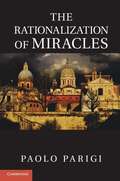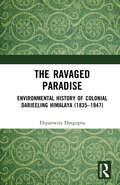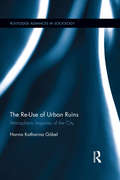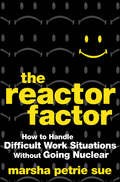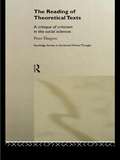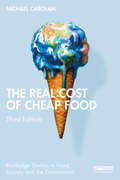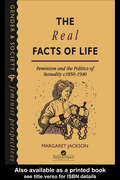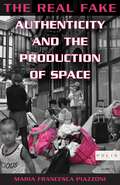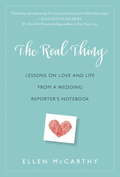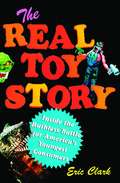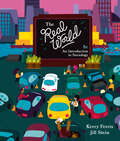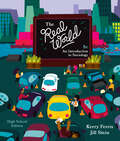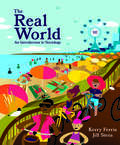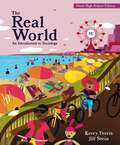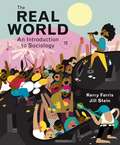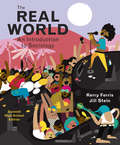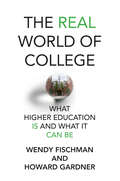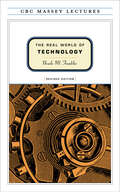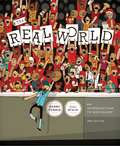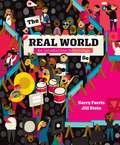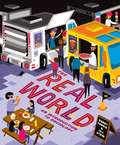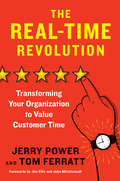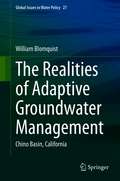- Table View
- List View
The Rationalization of Miracles
by Paolo ParigiDuring the Counter-Reformation in southern Europe, Catholic Church officials developed rules to legitimize miracles performed by candidates to sainthood. The Rationalization of Miracles uncovers a tacit understanding between central religious officials and local religious activists. Each group had a vested interest in declaring miracles: Catholic Church leaders sought legitimacy in the wake of the crisis of faith created by the Protestant Schism and religious acolytes needed Church approval to secure a flow of resources to their movements. The Church's new procedure of deeming miracles 'true' when there were witnesses of different statuses and the acts occurred in the presence of a candidate's acolyte served the needs of both parties. And by developing rules and procedures for evaluating miracles, the Church rationalized the magic at the root of the miracles, thereby propelling the institution out of a period of institutional, political and social uncertainty and forming the basis of modern sainthood.
The Rationalizing Voter
by Milton Lodge Charles S. TaberPolitical behavior is the result of innumerable unnoticed forces and conscious deliberation is often a rationalization of automatically triggered feelings and thoughts. Citizens are very sensitive to environmental contextual factors such as the title "President" preceding "Obama" in a newspaper headline, upbeat music or patriotic symbols accompanying a campaign ad, or question wording and order in a survey, all of which have their greatest influence when citizens are unaware. This book develops and tests a dual-process theory of political beliefs, attitudes, and behavior, claiming that all thinking, feeling, reasoning, and doing have an automatic component as well as a conscious deliberative component. The authors are especially interested in the impact of automatic feelings on political judgments and evaluations. This research is based on laboratory experiments, which allow the testing of five basic hypotheses: hot cognition, automaticity, affect transfer, affect contagion, and motivated reasoning.
The Ravaged Paradise: Environmental History of Colonial Darjeeling Himalaya (1835–1947)
by Dipanwita DasguptaThis book makes a systematic attempt to explore the environmental history of Darjeeling during the British colonial period (1835-1947), which profoundly transformed the environment of Darjeeling by introducing commercial control over the natural resources. After the foundation of Darjeeling as the hill station for the low-income groups of British administration living in Bengal and Burma, the place was transformed into a social, recreational and commercial centre for the British authorities. The railway construction boom, introduction of tea plantation, the growth of a commercial market for timber and increasing demands for fuel and building materials depleted the forest cover. The less explored regions of Darjeeling attracted the adventure-thirsty Britons. A series of investigations were made on the marketable products, the condition of roads, and quality of soil of these regions. The ethnographic, geological, botanical and zoological study of the Darjeeling was started by the colonial officials in the nineteenth century. In the early stage of expansion of colonialism in Asia, Africa, Australia and South America, the European colonizers faced numerous problems in dealing with the untouched nature. The accumulation of the knowledge of surrounding regions and proper management of the labour became essential for the colonial authority for transformation of the existing environment of the densely forested tropical colonies. Taylor and Francis does not sell or distribute the print editions of this book in India, Pakistan, Nepal, Bhutan, Bangladesh and Sri Lanka.
The Re-Use of Urban Ruins: Atmospheric Inquiries of the City (Routledge Advances in Sociology)
by Hanna Katharina GöbelHow do urban ruins provoke their cultural revaluation? This book offers a unique sociological analysis about the social agencies of material culture and atmospheric knowledge of buildings in the making. It draws on ethnographic research in Berlin along the former Palace of the Republic, the E-Werk and the Café Moskau in order to make visible an interdisciplinary regime of design experts who have developed a professional sensorium turning the built memory of the city into an object of aesthetic inquiry.
The Reactor Factor
by Sue Marsha PetrieHow to encourage personal responsibility and eliminate entitlement at work Marsha Petrie Sue, MBA, is a renowned professional speaker who addresses, among other topics, the business value of personal accountability at work. When leaders and workers are held personally responsible for their choices, results improve -- and the entitlement mentality is abolished. In The Reactor Factor, Petrie Sue combines her proven lessons on accountability from interviews with key business leaders to help readers understand how to maximize success and turn negative situations into positive business results, whether a leader or employee. This book shows you how to take charge of your professional future for long-term success. Petrie Sue guides you through the ongoing process of personal development and growth that will guarantee success for your career and organization. Marsha Petrie Sue is also the author of Toxic People: Decontaminate Difficult People Without Using Weapons and Duct Tape Teaches you how to make better decisions to achieve your goals Provides the skills and tactics you need to handle any situation at work Helps you focus on your strengths and remove blame Shows you how to learn from the past to improve your professional future The Reactor Factor is a practical and real-world guide to forging ahead professionally while improving your career, satisfaction, and success.
The Reading of Theoretical Texts (Routledge Studies in Social and Political Thought)
by Peter EkegrenSince the structuralist debates of the 1970s the field of textual analysis has largely remained the preserve of literary theorists. Social scientists, while accepting that observation is theory laden have tended to take the meaning of texts as given and to explain differences of interpretation either in terms of ignorance or bias. In this important contribution to methodological debate, Peter Ekegren uses developments within literary criticism, philosophy and critical theory to reclaim this study for the social sciences and to illuminate the ways in which different readings of a single text are created and defended.
The Real Cost of Cheap Food (Routledge Studies in Food, Society and the Environment)
by Michael CarolanThis thought-provoking, accessible book critically examines the dominant food regime on its own terms, by seriously asking whether we can afford cheap food and by exploring what exactly cheap food affords us.The author shows why today's global food system produces just the opposite of what it promises. The food produced under this regime is in fact exceedingly expensive. Many of these costs will be paid for in other ways or by future generations and cheap food today may mean expensive food tomorrow. By systematically assessing these costs the book delves into issues related, but not limited to, the food system, the environment, sustainable development, health, and social justice. In this new edition the author brings all data and citations fully up to date. Increased coverage is given to many topics including climate change, vertical agriculture, global pandemics, geopolitical instability, agriculture 4.0, alternative proteins, and food justice. Detailing the numerous ways that our understanding of food has narrowed, such as its price per ounce, combination of nutrients, yield per acre, or calories, the book argues for a more contextual view of food when debating its affordability. Expanding an innovation introduced in the second edition, concrete case studies of collective mobilization can be found throughout all chapters to support a narrative that balances being critical with being hopeful.This book is essential reading for those interested in critical food studies, food and agriculture, and a sustainable and socially just food system.
The Real Facts Of Life: Feminism And The Politics Of Sexuality C1850-1940
by Margaret JacksonDuring the last twenty years feminist research into the history of sexuality has made important contributions to the theoretical understanding of the relationship between sexuality and male power. When sexology became established as a science, feminists had for many years been engaged in a struggle to change male sexuality, by waging campaigns against male sexual violence and abuse of women and children; by challenging the institutions of marriage and prostitution; and by asserting in theory and in practice the right to female sexual autonomy. Despite the excellent research published in this important and fascinating aspect of feminist history, there are still gaps in our knowledge.; "The Real Facts of Life" aims to fill these gaps: Why and when did sexuality become an important political issue for the 19th century feminist?; What was the history of campaigns against double standards of sexual morality?; Why were feminists so divided in their views about sexual freedom and its relationship to women's emancipation? The analysis of these issues illuminates past and present feminists' ideas and theories about sexuality. Margaret Jackson's main aims in "The Real Facts of Life" are to make a contribution towards understanding the history of the struggle for female sexual autonomy; to provide a revolutionary feminist analysis of the social construction of sexuality and its relationship to male power, and to provide a critique of sexology and the male-defined concept of sexual "liberation".
The Real Fake: Authenticity and the Production of Space (Polis: Fordham Series in Urban Studies)
by Maria Francesca PiazzoniThames Town—an English-like village built in Shanghai—is many places at once: a successful tourist destination, an affluent residential cluster, a city of migrant workers, and a ghost town. The Real Fake explores how the users of Thames Town transform a themed space into something more than a “fake place.” Piazzoni understands authenticity as a dynamic relationship between people, places, and meanings that enables urban transformations. She argues that authenticity underlies the social and physical production of space through both top-down and bottom-up dynamics. The systems of moral and aesthetic judgments that people associate with “the authentic” materialize in Thames Town. Authenticity excludes some users as it inhibits access and usage especially to the migrant poor. And yet, ideas of the authentic also encourage everyday spontaneous appropriations of space that break the village’s staged atmosphere. Most scholars criticize theming by arguing that it produces a “fake,” controlling city. Piazzoni complicates this view by demonstrating that although the exclusionary character of theming remains unquestionable, it is precisely the experience of “fakeness” that allows Thames Town’s users to develop a sense of place. Authenticity, the ways people construct and spatialize its meanings, intervenes holistically in the making and remaking of space.
The Real Story of Risk
by Glenn CrostonOffering a wealth of fascinating information about health, sex, money, safety, food, and the environment, this book illuminates an often-misunderstood but crucial aspect of daily life. We live in a world of risk. It waits for us in our refrigerator and surrounds us on the freeway. It's lurking in our arteries and sitting in our 401(k) accounts. Given that we deal with risk on a constant basis, we should be good at it; as it turns out, though, we're not. We're blind to common risks like heart disease (one in five deaths), but we shrink in fear from rare events like shark attacks (one in a million) and airplane crashes (one in twenty thousand). What accounts for our poor ability to perceive and react to the risks that really matter? Starting from an evolutionary perspective, the author traces our distorted perception of risk back to our ancestors, reminding readers that we are all the culmination of a long line of survivors who fought life-and-death threats such as attacks from wild animals, starvation, and disease. The fact that we have covered Earth with seven billion people is a testament to our skill at overcoming these risks. But our spectacular success has also produced our contemporary artificial world with new threats like climate change, chili dogs, and online gambling. Our brains, which evolved to deal with the ancient world, are ill equipped to process the new threats we face. Croston examines the many facets of our hazardous modern environment that we only dimly perceive. He explains why we let our guard down for a beautiful face, why slow-moving risks (like rising seas) are hard to stop, how a good story (though false) can be more persuasive than dry statistics (even alarming ones), what we fear even more than death, and many other intriguing quirks about our built-in incompetence to adequately handle present-day risks.
The Real Thing
by Ellen MccarthyFrom a Washington Post weddings reporter who's covered more than two hundred walks down the aisle comes a warm, witty, and wise book about relationships--the mystery, the science, and the secrets of how we find love and make it last. Ellen McCarthy has explored the complete journey of our timeless quest for "The One," the Soul Mate, the Real Thing. This indispensable collection of insights--on dating, commitment, breakups, weddings, and marriage--gives us a window into enduring romance: * Go Online Already--"It's a major time suck and a black hole of rejection and ambiguity and lies. But you know what? It also works." * Keep It Confidential--"If you have to get something off your chest, pick someone whose wisdom you really trust, and who isn't likely to spread the gossip to all your mutual acquaintances." * Be Nice--"Brewing the morning coffee, touching the small of your partner's back, filling their car with gas. These things add up to more relationship satisfaction than a fancy dinner on Valentine's Day ever could." The Real Thing features many more nuggets of wisdom, valuable information from the latest studies on commitment, candid testimonials from a variety of couples, and the personal story of McCarthy's own search for "the keeper"--which begins, ironically, with a breakup the very same day she started as the Post's full-time weddings reporter. Whether you're looking for love or looking to strengthen your relationship, this book is a wonderful and clear-eyed map to the human heart.Praise for The Real Thing "A wise and compassionate look at how we love, along with some gentle suggestions for how we could get a little better at it . . . McCarthy has done something rare: She has written an optimistic book about love that is clear-eyed and unsentimental."--The Washington Post"What a charming and captivating book this is! We never stop learning about love, and so many great lessons are within these pages."--Elizabeth Gilbert, author of Eat, Pray, Love "My readers often say to me, 'If we lived next door to each other, we'd be best friends.' That is precisely what I wanted to say to smart, funny, self-effacing Ellen McCarthy after I finished reading The Real Thing. I loved every lesson laid out in a book that wouldn't dare to call itself a field guide to marriage but amounts to as much on every page. This is a deeply useful little book."--Kelly Corrigan, author of Glitter and Glue "Upbeat and sweet . . . This rich collection of stories charms and edifies, is filled with quotes from couples as well as experts in the field, and serves as not just stories to sigh over but lessons to apply."--Booklist (starred review) "A fun read full of wonderful stories . . . McCarthy delivers a welcome combination of cynicism and poignancy in this account, which reads with the ease and accessibility of a self-help book."--Library Journal "A comforting, realistic, and endearing portrait of modern relationships . . . This book will not only charm those in decades-old marriages, but also inspire those afraid love will never arrive for them."--Publishers Weekly "Straight-talking . . . dating advice for adults of all ages."--Kirkus ReviewsFrom the Hardcover edition.
The Real Toy Story
by Eric ClarkThe American toy business is massive, world dominating, cutthroat, exciting, and increasingly willing to sacrifice our kids in its frantic rush for profit. And yet, for all its rapaciousness, the industry is in the business of delighting and fascinating our children. Toys are one of the most emotive subjects in the world. We all remember our own toys; we care desperately about those we choose for our kids, knowing these objects help shape children's lives. They are also a constantly newsworthy item: every Christmas, which toys are hot -- and the scramble by parents to grab them before the stores are empty -- is front-page and TV bulletin news. The Real Toy Story tells the tales of these toys and of the vast, world-dominating $22 billion American industry that creates them. The rewards for success are enormous: a top toy can earn billions -- H. Ty Warner shot into Forbes's World's Richest People list with his creation of Beanie Babies. The price of failure is just as huge -- the battlefield is littered with the corpses of once-successful toy companies whose multimillion-dollar gambles did not pay off. It is a world of contrasts. The Real Toy Story looks at both sides: at Slinky, Elmo, Barbie, Transformers, and their creators, but also at the dark side of an industry that leads the way in cold-blooded marketing targeted at children. Parents will want to learn about how this seemingly benign industry exploits, sometimes surreptitiously, the many new media: cable television, the internet, CD-ROMs, sometimes even invading the playgrounds to peddle their wares to unsuspecting young people. Perhaps more disturbingly, this hard-hitting book examines the vast gap between the cuddly image of toys and how almost all toys destined for America are actually produced in China under sweatshop conditions. Today the toy industry is in the midst of rapid change. Tapping into the concern millions of adults have about the toys they choose for the children in their lives, this riveting exposé is essential reading for everyone who cares about kids.
The Real World (Eighth Edition)
by Kerry Ferris Jill SteinThe most relevant textbook for today’s students Instructors adopt—and stick with—The Real World because students love it. And students love it because it was written for them. In every chapter, Ferris and Stein use examples from everyday life, the media, and pop culture to get students thinking sociologically and to show the relevance of sociology to their relationships, jobs, and the future of society. Innovative and assignable Data Workshops in every chapter and online give students a chance to apply theoretical concepts to their own lives and actually do sociology. Expansive coverage of the Covid-19 pandemic throughout the Eighth Edition package highlights how the pandemic has affected all aspects of social life, from how we work and learn to the way we organize our family lives. This purchase offers access to the digital ebook only.
The Real World (Eighth High School Edition)
by Kerry Ferris Jill SteinThe most relevant textbook for today’s students Teachers select The Real World because students love it. And students love it because it was written for them. In every chapter, Ferris and Stein use examples from everyday life, the media, and pop culture to get students thinking sociologically and to show the relevance of sociology to their relationships and future careers. Innovative and assignable Data Workshops in every chapter and online give students a chance to apply theoretical concepts to their own lives and actually do sociology. Aligned to the American Sociological Association (ASA)’s National Standards for High School Sociology and featuring a robust support package, The Real World sets both students and instructors up for success. This purchase offers access to the digital ebook only.
The Real World (Ninth Edition): An Introduction To Sociology
by Kerry Ferris Jill SteinThe most relevant textbook for today’s students The Real World is the best-selling book for the introductory course because students love it. In every chapter, Ferris and Stein use examples from everyday life, the media, and pop culture to get students thinking sociologically and to show the relevance of sociology to their relationships, jobs, and the future of society. Innovative and assignable Data Workshops give students a chance to apply theoretical concepts to their own lives and get hands-on experience with the tools of social science. New Theory in Everyday Life interactives in the Norton Illumine Ebook, along with Check Your Understanding questions with answer-specific feedback and rich multimodal tools such as short video clips and Dynamic Data Figures, support students as they develop their sociological imaginations. This purchase offers access to the digital ebook only.
The Real World (Ninth High School Edition): An Introduction To Sociology
by Kerry Ferris Jill SteinThe most relevant textbook for today’s students Teachers select The Real World because students love it. Kerry Ferris and Jill Stein set out to write a book that was sorely needed for sociology courses: one that was written for student readers. Now in its Ninth Edition, The Real World been used by over 7,500 high school students. In every chapter, Ferris and Stein use examples from everyday life, the media, and pop culture to get students thinking sociologically and to show the relevance of sociology to their relationships, jobs, and the future of society. Innovative and assignable Data Workshops give students a chance to apply theoretical concepts to their own lives and get hands-on experience with the tools of social science. The new Norton Illumine Ebook features interactives, videos, and concept check questions to support students as they develop their sociological imaginations. This purchase offers access to the digital ebook only.
The Real World (Seventh Edition)
by Kerry Ferris Jill SteinThe most relevant textbook for today’s students Students love The Real World because it was written for them. In every chapter, Ferris and Stein use examples from everyday life and pop culture to get students thinking sociologically and to show the relevance of sociology to their relationships, jobs, and the future of society. Innovative Data Workshops in every chapter give students a chance to apply theoretical concepts to their own lives and actually do sociology. With low-cost formats, The Real World sets both students and instructors up for success. This purchase offers access to the digital ebook only.
The Real World (Seventh High School Edition)
by Kerry Ferris Jill SteinThe most relevant textbook for today’s high school students Students love The Real World because it was written for them. In every chapter, Ferris and Stein use examples from everyday life and pop culture to get students thinking sociologically and to show the relevance of sociology to their relationships, jobs, and the future of society. Innovative Data Workshops in every chapter give students a chance to apply theoretical concepts to their own lives and actually do sociology. With low-cost formats, The Real World sets both students and instructors up for success. This purchase offers access to the digital ebook only.
The Real World of College: What Higher Education Is and What It Can Be
by Howard Gardner Wendy FischmanWhy higher education in the United States has lost its way, and how universities and colleges can focus sharply on their core mission.For The Real World of College, Wendy Fischman and Howard Gardner analyzed in-depth interviews with more than 2,000 students, alumni, faculty, administrators, parents, trustees, and others, which were conducted at ten institutions ranging from highly selective liberal arts colleges to less-selective state schools. What they found challenged characterizations in the media: students are not preoccupied by political correctness, free speech, or even the cost of college. They are most concerned about their GPA and their resumes; they see jobs and earning potential as more important than learning. Many say they face mental health challenges, fear that they don&’t belong, and feel a deep sense of alienation. Given this daily reality for students, has higher education lost its way? Fischman and Gardner contend that US universities and colleges must focus sharply on their core educational mission. Fischman and Gardner, both recognized authorities on education and learning, argue that higher education in the United States has lost sight of its principal reason for existing: not vocational training, not the provision of campus amenities, but to increase what Fischman and Gardner call &“higher education capital&”—to help students think well and broadly, express themselves clearly, explore new areas, and be open to possible transformations. Fischman and Gardner offer cogent recommendations for how every college can become a community of learners who are open to change as thinkers, citizens, and human beings.
The Real World of Technology (The CBC Massey Lectures)
by Ursula FranklinIn this expanded edition of her bestselling 1989 CBC Massey Lectures, renowned scientist and humanitarian Ursula M. Franklin examines the impact of technology upon our lives and addresses the extraordinary changes since The Real World of Technology was first published. In four new chapters, Franklin tackles contentious issues, such as the dilution of privacy and intellectual property rights, the impact of the current technology on government and governance, the shift from consumer capitalism to investment capitalism, and the influence of the Internet upon the craft of writing.
The Real World: An Introduction to Sociology
by Kerry Ferris Jill SteinThe Real World succeeds in classrooms, because it focuses on the perspective that students care about mostly their own. In every chapter, the authors use activities, examples from everyday life, and popular culture to draw students into thinking sociologically and to make abstract concepts more concrete.
The Real World: An Introduction to Sociology
by Kerry Ferris Jill SteinThe Real World succeeds in classrooms because it focuses on the perspective that students know best―their own. In every chapter, Ferris and Stein use examples from everyday life and pop culture to draw students into thinking sociologically and to show the relevance of sociology to their relationships, jobs, and future goals. Data Workshops in every chapter give students a chance to apply theoretical concepts to their personal lives and actually do sociology.
The Real World: An Introduction to Sociology (Fifth Edition)
by Kerry Ferris Jill SteinThe Real World succeeds in classrooms because it focuses on the perspective that students care about most-their own. In every chapter, authors Kerry Ferris and Jill Stein use examples from everyday life and popular culture to draw students into thinking sociologically and to show the relevance of sociology to our relationships, our jobs, and our future goals.
The Real-Time Revolution: Transforming Your Organization to Value Customer Time
by Jerry Power Thomas FerrattTime has become a precious commodity, so business leaders who can save their customers' time more effectively than competitors do will win their loyalty. This book shows how it's done. Business survival requires valuing what customers value—and in our overworked and distraction-rich era, customers value their time above all else. Real-time companies beat their rivals by being faster and more responsive in meeting customer needs. To become a real-time company, as top scholars Jerry Power and Tom Ferratt explain, you need a real-time monitoring and response system. They offer detailed advice on how to put procedures in place that will collect data on how well products or services are saving customer time; identify strengths, weaknesses, threats, and opportunities; and specify innovations needed to save even more customer time. Where should leaders look to innovate? Powers and Ferratt say to search every step in the life of a product or service, from development to production to usage. And for each step, they identify four possible levers for innovation: the design of the products or services themselves, the process used to produce them, the data that can be gathered on their use, and the people who make or provide the product or service. The book features dozens of examples of companies that are getting it right and the innovations they used to help their customers save time, all while helping themselves to a hefty slice of market share. This is a comprehensive, authoritative guide to thriving in a revolution that is sweeping every industry and sector.
The Realities of Adaptive Groundwater Management: Chino Basin, California (Global Issues in Water Policy #27)
by William BlomquistThis book has three primary objectives. The first objective is to provide scholars with a more realistic view of adaptive management, without arguing against adaptive management. Adaptive management is necessary as well as desirable, but it is not easy, and demonstrating that through the Chino Basin experience is an important goal. The second objective is to provide practitioners with encouraging yet cautionary lessons about the challenges and benefits of an adaptive approach – in similar fashion as the first objective, the goal here is to endorse the adaptive approach but in a clear-eyed manner that clarifies how hard it is and how much it requires. A third objective is to show all audiences that resource governance systems can fail, change, and succeed. There is no such thing as an ideal institutional design that is guaranteed to work; rather, making institutional arrangements work entails learning and adjustment when they begin to show problems as they inevitably will.
